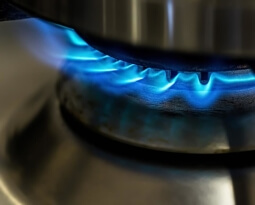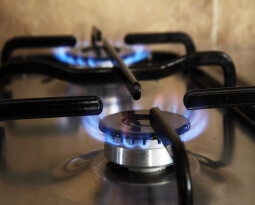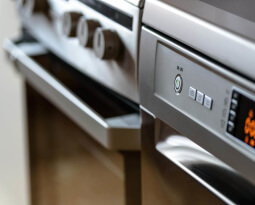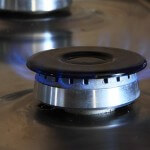We know that having a broken stove is a frustrating experience, that’s why we’re here to help you repair it and get you cooking again quickly. Do-it-yourself stove repairs can be easy, provided you can diagnose the problem and get the appropriate part if necessary. In this series you’ll find common broken stove symptoms. If your stove is experiencing one of them, give our experts a call to discuss the best course of action.
If your broken stove is producing little to no heat when you are baking, inspect parts like the bake element or the stove sensor to determine why.
Bake Element: The bake element is the heating element that is found at the bottom of the stove. Most electric stoves use both the bake element and the broil element in a bake cycle, with the bake element performing 90% of the heating. If the bake element isn’t working, the stove may not reach the set temperature or will take longer to reach that temperature, and food will normally burn on the top. To help determine if the bake element is defective you should first do a visual check. If the element is blistered or separated then it should be replaced. If the element appears to look normal, then turn the stove on to a bake function for a minute and then turn it off.
Check the element for signs of heating and if it is still cold then it may be defective. Disconnect the power and then remove the back panel. First check the wires as they may have become loose or corroded. If the element appears to be fine visually, test it for continuity with a multi-meter. If the element is burned or no longer has continuity, it will need to be replaced. If the element is ok then you will need to check the bake circuit to determine the cause. This involves live voltage checks and should only be performed by qualified persons. Components to check include fuses, if the range is equipped, and stove control thermostat or electronic control.
Stove Control Thermostat: The stove control thermostat is located in the main control panel and controls the bake and broil elements. It is a temperature controlled switch and as such will have contacts that supply power to these elements. A malfunctioning thermostat can cause your stove to produce too little, too much or no heat at all. For a symptom of not enough heat the stove thermostat, although unlikely, may be at fault. You should eliminate all other components first. Some controls can be calibrated up to 50 degrees Fahrenheit but you will require an accurate thermometer to perform this task.
The adjustment screw is normally located on the back of the control, but if sealed, it is not meant to be calibrated. Remove power to the appliance before performing this test. If the bake or broil elements are not receiving power, then you can check the appropriate contacts of the stove thermostat for continuity with a multi-meter.
Temperature Senor: On modern electronic control ranges, the stove temperature sensor is the part that monitors the stove temperature and signals the electronic control to turn the elements on and off. If it is not working properly it could be the reason why the stove is producing little or no heat. This part can be found inside the stove and is usually located near the broil element. Most modern stoves will display a fault code if the stove sensor is at fault. If you think the sensor may be the issue you can check the resistance with a multi-meter but will need to know the correct resistance of the sensor at room temperature. Remove power from the appliance before performing this test.
Electronic Control Board: Most modern stoves use an electronic control board to control the stove functions. These models will use the control board to operate the bake and broil elements. If there are no fault codes displayed then you should check for power to the elements. If there is no power to the elements, then you should check the control board to verify that there is power at the appropriate output relay. These are live voltage checks and should be performed by qualified persons only. If there is no output voltage then the control should be replaced.
Fuses: If your stove has internal fuses, a wiring or component problem could have caused a fuse to blow. A blown fuse is an indication that a component has shorted or failed, and the problem will need to be corrected. Most stoves that use fuses will have an indication of the circuits that are affected by a particular fuse. If a stove fuse has blown, then you should inspect the stove element and the associated wiring to determine the cause before replacing the fuse. Do not change the rating of the fuses.
Other repair parts for a broken stove: These are the most common parts that can cause your broken stove to not turn on, but there are other parts that could be at fault. If you are unable to fix your broken stove, give our experts a call to discuss the issue. We might be able to help you diagnose problem and order you the right parts so you can get back to cooking as quickly as possible.







